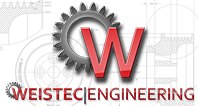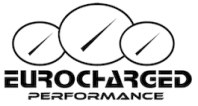Results 51 to 64 of 64
Thread: N54 Injector limits?
-
07-20-2015, 11:15 AM #51
 Guest Vendor
Guest Vendor






- Join Date
- Nov 2012
- Posts
- 2,495
- Rep Points
- 1,970.5
- Mentioned
- 204 Post(s)
- Rep Power
- 0
Ok, I was just curious about the wiring anyway. Didn't even think of fuel routing. I assume since it works w/ your control scheme (not using DME for HPFP #2 ) then it is 100% not a fuel line routing issue.
-
07-20-2015, 11:21 AM #52
 Guest Vendor
Guest Vendor






- Join Date
- Aug 2012
- Location
- Hayward, CA
- Posts
- 9,218
- Rep Points
- 3,666.1
- Mentioned
- 349 Post(s)
- Rep Power
- 0
-
07-20-2015, 11:55 AM #53
 Member
Member









- Join Date
- Oct 2012
- Posts
- 575
- Rep Points
- 611.8
- Mentioned
- 10 Post(s)
- Rep Power
- 7
Well considering the continental engineer conversation and the tech docs both saying the n5x is capable of stratified injection I think it's pretty safe to say hardware wise were good. The real question is whether the software (tables and corresponding logic) was ever truly completed and if it exists whole in our rom versions.
We should at least be able to spray into the compression stroke.
-
07-20-2015, 12:00 PM #54
 Guest Vendor
Guest Vendor






- Join Date
- Nov 2012
- Posts
- 2,495
- Rep Points
- 1,970.5
- Mentioned
- 204 Post(s)
- Rep Power
- 0
There are tables for stratified injection as well. I'm leaning towards it not being used, but I will define them anyway and it can be tested.
As for the diagram showing when 1 pulse vs 2 and 3 is used, with the load to torque tables, I'd wager we can force the DME to use any of those modes by manipulating the output torque
It's going to take probably 2x more hours than I thought to define all the DI stuff though...they changing the table dimensions between the DAMOS and IJEOS. It's good because it gives more resolution, but bad because finding them in IJ just became much more difficult.
-
07-20-2015, 04:00 PM #55
 Guest Vendor
Guest Vendor






- Join Date
- Nov 2012
- Posts
- 2,495
- Rep Points
- 1,970.5
- Mentioned
- 204 Post(s)
- Rep Power
- 0
@lcvette, Moving relevant injector discussion here:
There are two injector duration tables, one for low energy range piezo, and one for high energy range. The duration value is in "ms," I'm trying to determine the axis units. The tables state "for different injector pressure differences", so I'm assuming one axis is cylinder pressure and the other is rail pressure.
Low energy: x-axis goes from 0 - 37689, and the y-axis goes from 471 - 41457
High energy: x-axis goes from 0 - 30200, and the y-axis is the same as above.
Anyone have any ideas that would make sense?
-
07-20-2015, 05:41 PM #56
 Member
Member










- Join Date
- Nov 2012
- Posts
- 434
- Rep Points
- 694.0
- Mentioned
- 2 Post(s)
- Rep Power
- 7
Standard unconstrained piezo actuator input is voltage and output is displacement. If blocked or constrained it's usually calibrated as volts to force. Displacements are tiny so they are often used in multiple layers/stacks to get more stroke so it may be low energy only hits a subset of a stack, high energy the whole stack?
It works in reverse too, applied displacement or force will generate a voltage. Most accelerometers are piezos with a reference mass glued to it or to a lever with a ref mass on it, and the input is acceleration on the ref mass and the output is in volts (calibrated to g's using known ref mass or mass + lever arm).
-
07-20-2015, 05:42 PM #57
 Guest Vendor
Guest Vendor






- Join Date
- Aug 2012
- Location
- Hayward, CA
- Posts
- 9,218
- Rep Points
- 3,666.1
- Mentioned
- 349 Post(s)
- Rep Power
- 0
-
07-20-2015, 05:47 PM #58
 Member
Member










- Join Date
- Nov 2012
- Posts
- 434
- Rep Points
- 694.0
- Mentioned
- 2 Post(s)
- Rep Power
- 7
They are pretty cool materials. Used to work with the DARPA smart materials gang doing insane blue sky military stuff with piezos. Like you can make carbon fiber beams and struts with variable directional stiffness properties, and then glue or embed piezo elements onto/into them and have controllable multi-axis bending carbon fiber beams. Think helicopter rotor blades that change shape, damp vibrations, etc. Fun times.
-
07-20-2015, 08:09 PM #59
 Guest Vendor
Guest Vendor






- Join Date
- Nov 2012
- Posts
- 2,495
- Rep Points
- 1,970.5
- Mentioned
- 204 Post(s)
- Rep Power
- 0
Yep, you are correct. The injectors have a large stack of piezo actuators. The applied voltage range is constrained, there is a min and a max, units are mJ. I haven't found any "calibration" table for them, however that is why they must be coded when installing new injectors. The values that you input during the coding are their calibration data.
I think I have the axis units figured out too. I will post an update tomorrow detailing that, and give you guys some of the actual table data to look at.
-
07-21-2015, 12:57 AM #60
 Member
Member


- Join Date
- Sep 2012
- Location
- Brisbane, Australia
- Posts
- 3,494
- Rep Points
- 1,794.0
- Mentioned
- 73 Post(s)
- Rep Power
- 18
-
07-21-2015, 01:37 AM #61
 Guest Vendor
Guest Vendor










- Join Date
- Jun 2013
- Location
- Wilmington, NC
- Posts
- 271
- Rep Points
- 731.6
- Mentioned
- 5 Post(s)
- Rep Power
- 0
I just saw this ... Very interesting! I ran some simple conversions and didn't find any pressure related units to convert to that matches up with those monster numbers. But I started wondering if perhaps it was converting to force. I didn't get very far before dinner and family time. But it sounds like you got it figured out and the reply above sounded well informed. More then I could have helped by far. Looking forward to your findings!
-
07-21-2015, 06:30 AM #62
 Member
Member










- Join Date
- Nov 2012
- Posts
- 434
- Rep Points
- 694.0
- Mentioned
- 2 Post(s)
- Rep Power
- 7
-
07-27-2015, 08:58 PM #63
-
07-27-2015, 09:27 PM #64
 Guest Vendor
Guest Vendor






- Join Date
- Aug 2012
- Location
- Hayward, CA
- Posts
- 9,218
- Rep Points
- 3,666.1
- Mentioned
- 349 Post(s)
- Rep Power
- 0





 Quote
Quote











Hey...
We welcome terahertz5k